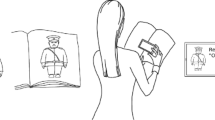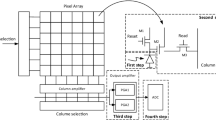Abstract
Digital photography completely supplanted film photography, with a huge, disruptive shift occurring during the first decade of the twenty-first century. The collapse of film photography led to the fall of industry giant like Kodak. Then in 2007, Apple introduced the smartphone and digital photography went mobile. Today smartphones dominate everyday imaging, but the digital camera industry has survived. In this chapter, we will take a look at the state of the art in consumer digital imaging as it stands halfway through this second decade of the twenty-first century. We follow an image from the photons striking the CMOS electronic sensor through to the compressed image or video stored on a memory card. Starting with a look at the basics of digital photography, we move on to explore the complexity of the image processing pipeline (IPP) that is used on today’s cameras. The reader will be introduced to different color spaces and how these are used for different purposes inside the IPP. The mechanisms of autofocus (AF) and exposure using CMOS sensors are explained, and the concepts of the rolling shutter and high-dynamic-range (HDR) imaging are explained. Video preview and image compression are also explored. In a companion article, we will take a look at some developments in “smart imaging” that allow pictures to be enhanced in ways that mimic high-end photography equipment on miniature smartphone cameras.
Similar content being viewed by others
Abbreviations
- ADC:
-
Analog/digital convertor
- APS-C:
-
Advanced Photo System type-C
- CDAF:
-
Contrast detection autofocusing
- CE:
-
Consumer electronics
- CFA:
-
Color filter array
- CMOS:
-
Complementary metal-oxide semiconductor
- DOF:
-
Depth of field
- DSLR:
-
Digital single-lens reflex
- DSP:
-
Digital signal processing
- FOV:
-
Field of view
- GPU:
-
Graphics processing unit
- HDR:
-
High dynamic range
- IPP:
-
Image processing pipeline
- ISP:
-
Image signal processor
- RLE:
-
Run-length encoding
- VCM:
-
Voice-coil module
- VGA/SVGA:
-
Video graphics array/super video graphics array
- WFOV:
-
Wide field of view
Further Reading
Andorko I, Corcoran P, Bigioi P (2010) Hardware implementation of a real-time 3D video acquisition system. In: Optimization of electrical and electronic equipment (OPTIM), 2010 12th international conference on Brasov, Romania, pp 920–925. IEEE.0
Baer R (2010) Resolution limits in digital photography: the looming end of the pixel wars – OSA technical digest (CD). In: Imaging systems, 2010, p ITuB3
Baker S, Bennett E, Kang SB, Szeliski R (2010) Removing rolling shutter wobble. In: Proceedings of the IEEE computer society conference on computer vision and pattern recognition, 2010, San Francisco, California, pp 2392–2399
Bandoh Y, Qiu G, Okuda M, Daly S, Aach T, Au OC (2010) Recent advances in high dynamic range imaging technology. In: ICIP 2010 (IEEE international conference on image processing), 2010, Hong Kong, pp 3125–3128
Corcoran P, Stan C, Florea C, Ciuc M, Bigioi P (2014) Digital beauty: the good, the bad, and the (not-so) ugly. Consum Electron Mag IEEE 3(4):55–62
Dainty C (2012) Film photography is dead: long live film: what can digital photography learn from the film era? IEEE Consum Electron Mag 1(1):61–64
Forssén PE, Ringaby E (2010) Rectifying rolling shutter video from hand-held devices. In: Proceedings of the IEEE computer society conference on computer vision and pattern recognition, 2010, San Francisco, California, pp 507–514
Fowler B (2011) High dynamic range image sensor architectures. High Dyn Range Imaging Symp Work Stanford Univ Calif 7876:787602–787602-15
Gallagher P (2012) Smart-phones get even smarter cameras [future visions]. Consum Electron Mag IEEE 1(1):25–30
Gao W, Huang T, Reader C, Dou W, Chen X (2014) IEEE standards for advanced audio and video coding in emerging applications. Computer (Long Beach Calif) 47:81–83
Groen FC, Young IT, Ligthart G (1985) A comparison of different focus functions for use in autofocus algorithms. Cytometry 6(2):81–91
Grundmann M, Kwatra V, Castro D, Essa I (2012) Calibration-free rolling shutter removal. In: 2012 IEEE international conference on computational photography, Seattle, Washington, ICCP 2012
Han D, Choi J, Cho J-I, Kwak D (2011) Design and VLSI implementation of high-performance face-detection engine for mobile applications. In: 2011 IEEE international conference on consumer electronics (ICCE), 2011, Las Vegas, NV, pp 705–706
Ionita M, Corcoran P (2011) Advances in extending the AAM techniques from grayscale to color images. US 7965875, 28 Feb 2011
Ionita MC, Corcoran P, Buzuloiu V (2009) On color texture normalization for active appearance models. Image Process IEEE Trans 18(6):1372–8
Liang C-K, Chang L-W, Chen HH (2008) Analysis and compensation of rolling shutter effect. IEEE Trans Image Process 17(8):1323–30
Ligthart G, Groen F (1982) A comparison of different autofocus algorithms. In: Proceedings sixth international conference on pattern recognition, Munich, Germany, pp 597–600
Marpe D, Wiegand T, Gordon S (2005) H.264/MPEG4-AVC fidelity range extensions: Tools, profiles, performance, and application areas. In: Proceedings – international conference on image processing, ICIP, 2005, vol 1, Genoa, Italy, pp 593–596
Marpe D, Wiegand T, Sullivan GJ (2006) The H.264/MPEG4 advanced video coding standard and its applications. IEEE Commun Mag 44(8):134–143
Nicklin SP, Fisher RD, Middleton RH (2007) Rolling shutter image compensation. Lecture notes in computer science (including subseries Lecture notes in artificial intelligence and lecture notes in bioinformatics), vol 4434. LNAI, pp 402–409
Noll P (1997) MPEG digital audio coding. Signal Process Mag IEEE 14:59–81
Oth L, Furgale P, Kneip L, Siegwart R (2013) Rolling shutter camera calibration. In: Proceedings of the IEEE computer society conference on computer vision and pattern recognition, 2013, Columbus, Ohio, pp 1360–1367
Pourazad M, Doutre C, Azimi M, Nasiopoulos P (2012) HEVC: the new gold standard for video compression: how does HEVC compare with H.264/AVC? IEEE Consum Electron Mag 1(3):36–46
Santos A, Ortiz de Solorzano C, Vaquero JJ, Pena JM, Malpica N, Del Poze F (1997) Evaluation of autofocus functions in molecular cytogenetic analysis. J Microsc 188(03):597–600
Shih L (2007) Autofocus survey: a comparison of algorithms. In: Electronic imaging 2007 (proceedings SPIE), pp 65020B, 1–11
Sullivan GJ, Wiegand T (2005) Video compression-from concepts to the H.264/AVC standard. Proc IEEE 93:18–31
Sullivan GJ, Ohm JR, Han WJ, Wiegand T (2012) Overview of the high efficiency video coding (HEVC) standard. IEEE Trans Circuits Syst Video Technol 22:1649–1668
Vatolin DD, Seleznev I, Smirnov DM (2007) Lossless video codecs comparison ‘2007
Wallace GK (1992) The JPEG still picture compression standard. IEEE Trans Consum Electron 38(1):18–34
Waltham N (2013) CCD and CMOS sensors
Author information
Authors and Affiliations
Corresponding author
Editor information
Editors and Affiliations
Rights and permissions
Copyright information
© 2015 Springer-Verlag Berlin Heidelberg
About this entry
Cite this entry
Corcoran, P., Bigioi, P. (2015). Consumer Imaging I – Processing Pipeline, Focus and Exposure. In: Chen, J., Cranton, W., Fihn, M. (eds) Handbook of Visual Display Technology. Springer, Berlin, Heidelberg. https://doi.org/10.1007/978-3-642-35947-7_172-1
Download citation
DOI: https://doi.org/10.1007/978-3-642-35947-7_172-1
Received:
Accepted:
Published:
Publisher Name: Springer, Berlin, Heidelberg
Online ISBN: 978-3-642-35947-7
eBook Packages: Springer Reference EngineeringReference Module Computer Science and Engineering




